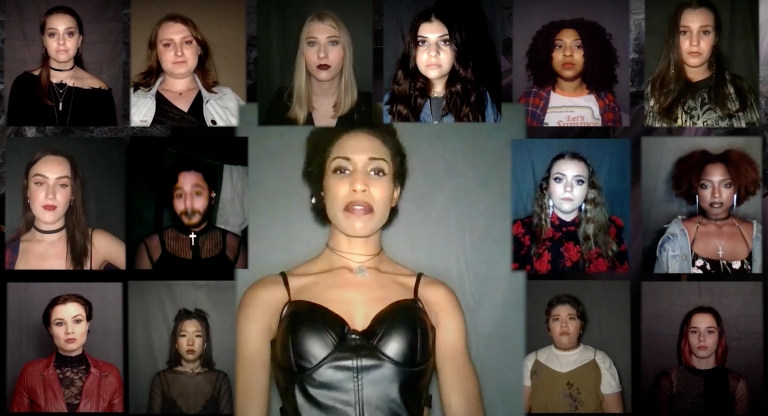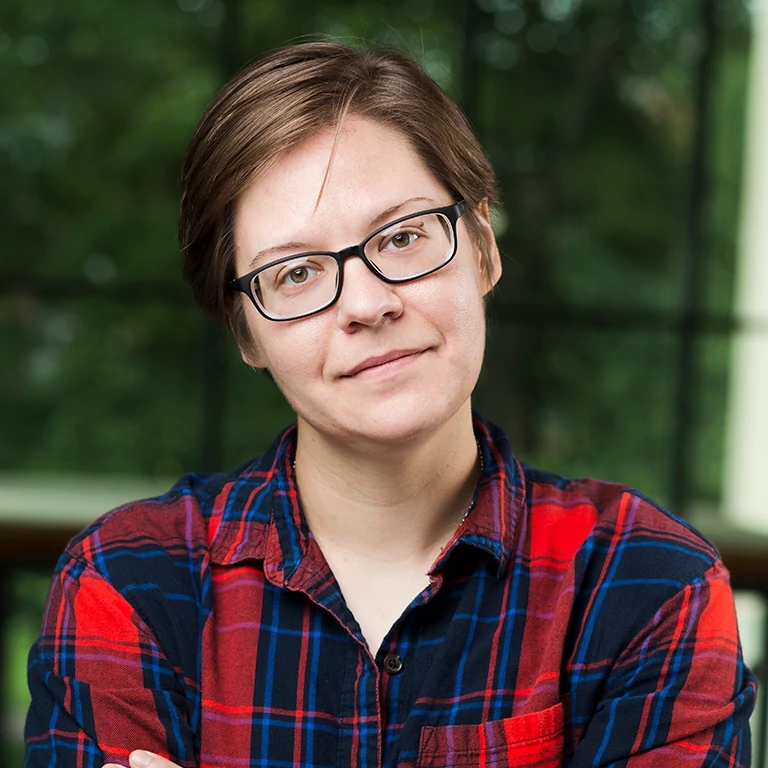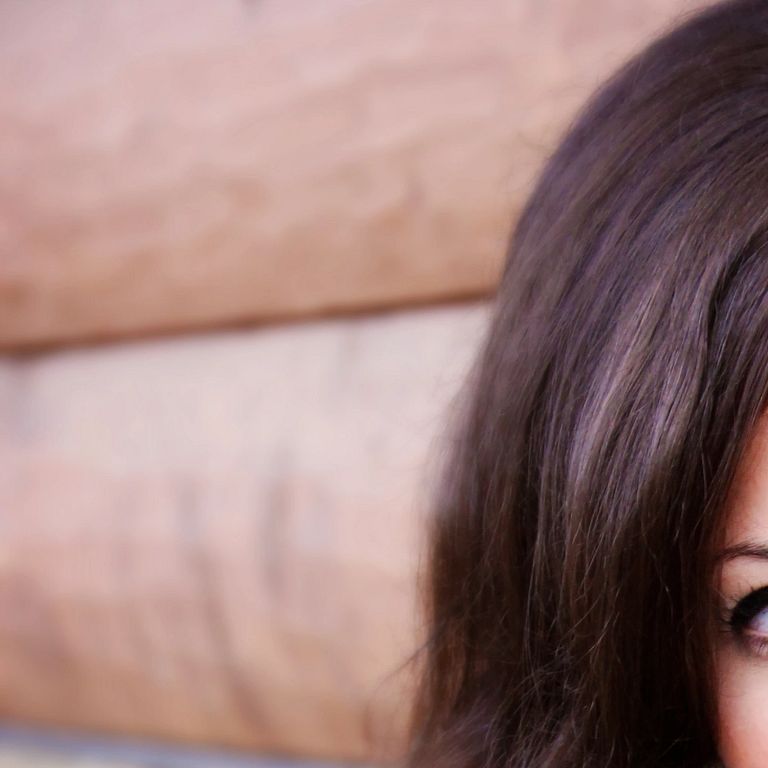
Throughout centuries and across borders, people have enjoyed comedy, music and drama productions presented on stages several feet away. But what happens when the live in-person audience, one of the key ingredients to a theater show, is cut off from performers? The IU Department of Theatre, Drama and Contemporary Dance knew it had to get creative, even if it meant doing so through a screen.
IU Theatre scheduled its entire 2020-21 season with online productions to ensure the safety and health of its performers, production teams and audiences. The decision sparked waves of creativity among designers and directors as they worked out ways to present their shows online from the performers’ homes.
“The biggest challenge we faced is how to transfer into the digital world something which we only have dealt with before non-digitally,” said Valeriya Nedviga, a second-year Master of Fine Arts student in scenic design. “We couldn’t build the scenery, and we couldn’t use many props because of safety concerns.”

Nedviga was the digital scenic and sound designer for “Black Super Hero Magic Mama,” a production part of IU Theatre’s “Amplified: A Series of Plays by Black Authors” that successfully opened the season. Nedviga and her designer colleagues looked for ways to create an environment for the performers to tell the story, which proved challenging as each actor must perform from their own apartment.
“Theater experience is seeing the actor in close proximity, seeing those lighting changes and ‘magical’ scene changes, acknowledging that something can go wrong because it’s a live performance, and life is unpredictable,” Nedviga said.
To transfer the experience online, while maintaining the aspects of a live performance like sound effects, backgrounds and characters sharing the stage, the designers needed to find a platform that could handle the complexity of it.
“Without all that, it would be just a pre-recorded show – which would never feel live – or a conference call without any extra tricks,” Nedviga said. “A combination of pre-recorded and live elements certainly gave the production a sense of live performance and provided the audience with an opportunity to still experience as-close-to-live theater as our challenging times allow us.”
The production teams have been using software called vMix for some of the shows, which allows them to manipulate multiple video and audio streams at once to control where the actors appear on screen.
“I hope that seeing that art is adapting to a new medium will tell our audience that performing arts are not extinct and progress as everything around them,” Nedviga said. “I hope that the audience will also feel connected to our production, cast and all the people who put their time and effort into bringing this production to life while learning the new way of presenting.”

The digital productions also pose new challenges for directors like Jamie Anderson, a second-year MFA directing candidate. Her most recent project, “Bonnets: (How Ladies of Good Breeding Are Induced to Murder),” opened Oct. 27 and runs until Oct. 31. She had to make a number of adjustments to her directing style to accommodate for an online show as well as to be mindful of the added stress for cast and crew members.
“It’s been night-and-day different,” Anderson said. “The beautiful thing about theater is that so much of it is about sharing the space with one another and forming a community, so that was the biggest adjustment for me: figuring out how to do that online and on Zoom, which was what we used to rehearse. There are still members of the cast that I’ve never met in person before, which is so crazy to me. So, we really zeroed in on having open, vulnerable conversations from day one.”
Anderson said it was all hands on deck to make the piece meaningful for everyone involved. She was aware of how exhausting it was for everyone to spend all day on Zoom in classes, and then have to rehearse for the shows on Zoom, too. To lessen the intensity of “Zoom fatigue,” Anderson tried to give people time off and condense rehearsals and production meetings to be as short and to the point as possible.
“My philosophy has always been around self-care for the artist,” Anderson said. “A big thing that I always do, not just in this virtual world, is to lead meditations and really focus on the closure process of working on something that’s a bit of a challenging piece or causing you to have to turn inward a lot. So, I leaned in I think even more in this process, because I know how challenging this moment is.”
Production designers had to get innovative for aspects of the show like live music, lighting and costumes. Actors pulled clothing from their own closets since they weren’t able to hold costume fittings. The punk-rock music that was intended to be performed live in the theater throughout the entire production had to be adjusted to performing through the online format.
The production’s lighting designer, second-year MFA lighting design candidate Lee Anne Meeks, provided actors with tools to do their own lighting from home. The changes, while disappointing to Anderson in some respects, allowed for the team to challenge themselves and learn new skills.
“It has encouraged all of the actors to really explore empathy for technicians and designers because they’ve had to take a lot more on themselves than they would otherwise,” Anderson said. “They’re their own lead electricians; they’re making these adjustments in real time. The ways in which everyone has stepped up to collaborate so holistically has been incredibly exciting and rewarding to experience.”
It was important to Anderson to stick with the live element, to honor the collective experience of storytelling despite it not being in person.
“It’s fun; it’s dynamic,” Anderson said. “It’s not theater, but it’s entertainment. I think it’s important to continue to explore ways to adjust to the world that we’re existing in as much as possible. I do think that while this is not a replacement for theater, it’s certainly a good band-aid for now.”
The “Bonnets” production, written by Jen Silverman, taps into feminine strength with comedic relief, which Anderson said feels timely in terms of where the world is right now. She said audiences can expect to see feminine empowerment as well as agency and an exploration of what that means through comedy.
“So many people have said through the years that women aren’t funny, and I think we absolutely prove that to be wrong in the work that’s being done in this,” Anderson said. “Our cast is representative of female and non-binary humans. It’s refreshing, I think, to see our world reflected in this time where we can’t gather together, but we can still reflect the world as we understand it to be, as opposed to waiting for something to change instead of taking it on ourselves to create that change that we need to see.”

